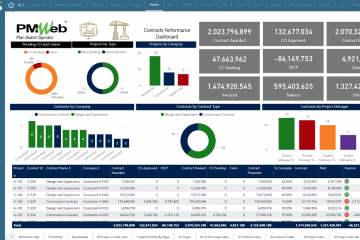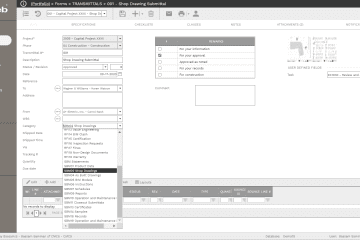The support of the senior management is the key to overcoming objections to investing in and implementing a construction project management software solution like PMWeb. To get their support, the senior management must understand the value of having improved transparency, accountability, governance, and real-time, single-version-of-the-truth performance and status reporting
For a PMIS, the challenges are far more than the challenges of implementing a planning and scheduling tool. A PMIS is about digitally transforming all project management processes that need to be performed on a capital project during the complete life cycle phases. To do so, a PMIS needs to digitally transform all needed processes and the management of project documents and associated folders. In addition, it needs to integrate with planning and scheduling software like Primavera and MS Project to align project activities, planned or scheduled dates, with the transactions of the different project management processes.
A PMIS should not be considered as an additional cost but rather than an opportunity to:
- reduce cost by decreasing the losses associated with project fraud
- make faster and better-informed decisions
- realize savings from the eliminated wasted effort in performing project management processes
- increase company value by transforming lessons learned into organizational assets
- increase the return of improved project team performance
- eliminate the cost of conflicts by improving executive stakeholders’ trust and confidence when it comes to reporting project’s performance
PMWeb is not only a comprehensive PMIS solution but also 100% web-enabled with the option of being self-hosted by our clients or provided with SaaS or Cloud. In addition, it has a multi-language interface including non-Latin languages.
Today, many industry-leading organizations are using PMWeb as their enterprise PMIS solution. The majority of which are public and private sector capital project owners who each have a considerable volume of programs and projects portfolio to deliver. What made senior management at those organizations overcome their objections and invest to digitally transform their existing manual and semi-manual project management processes and select PMWeb as their Project Management Information System can be summarized in three key points.
1. To have a proven commercial-off-the-shelf (COTS) solution specifically adapted for delivering capital construction projects.
2. To have a solution that enables formal as well as ad-hoc documented collaboration.
3. To ensure the protection of their project’s data.
THE DAYS FOR RE-INVENTING THE WHEEL ARE OVER
Each industry, the construction industry is no different, has its own common processes and forms that are used regardless of the construction project type, value, or even location. Those include:
- Request for Information (RFI)
- Meeting Minutes
- Transmittals
- Submittals
- Safety Incidents
- Daily Reports
- Punch List
- Cost Estimates
- Budgets
- Budget Adjustments
- Commitments
- Potential Change
- Orders
- Change Orders
- Progress Invoices
- Revenue Contracts
- Timesheets
- Stage Gates
- Risk Registers
- and more.
PMWeb comes ready out-of-the-box with all those forms and with the option to have additional user fields if needed.
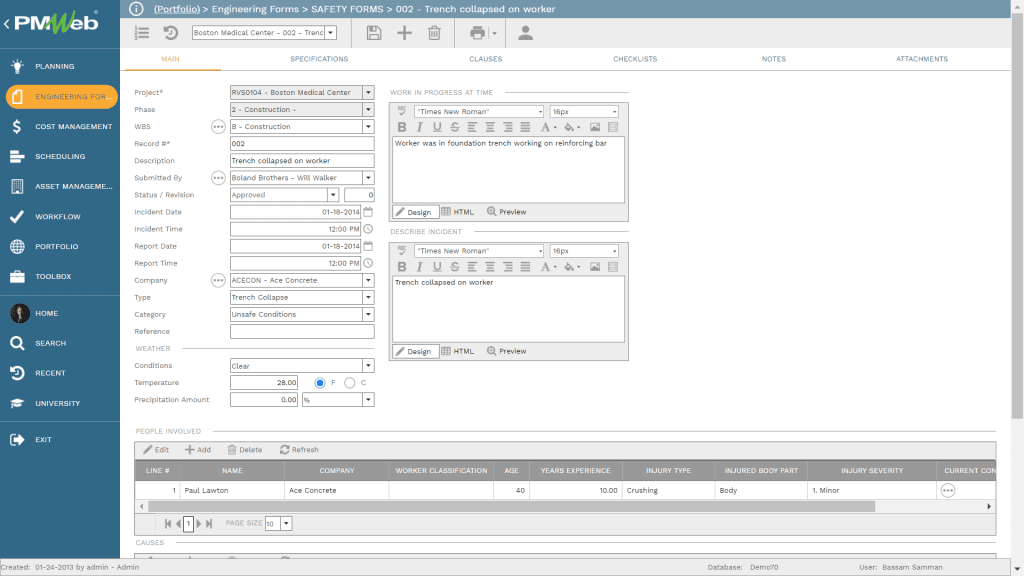
In addition, and knowing that many organizations have developed additional project management processes that could be specific to the way they manage their projects and for which a solution like PMWeb might not have, PMWeb custom form builder provides a quick and robust solution to create all those additional processes. Those could Work Inspection Requests customized for each technical specification section, Non-Compliance Reports, Gate Passes, Permits to Work, Confirmation of Verbal Instructions, Environmental Impact Assessment, Covid-19 Hygiene Compliance Checklist, Mobilization and De-Mobilization Checklists, Project Charter, Project Closeout Report among many others.
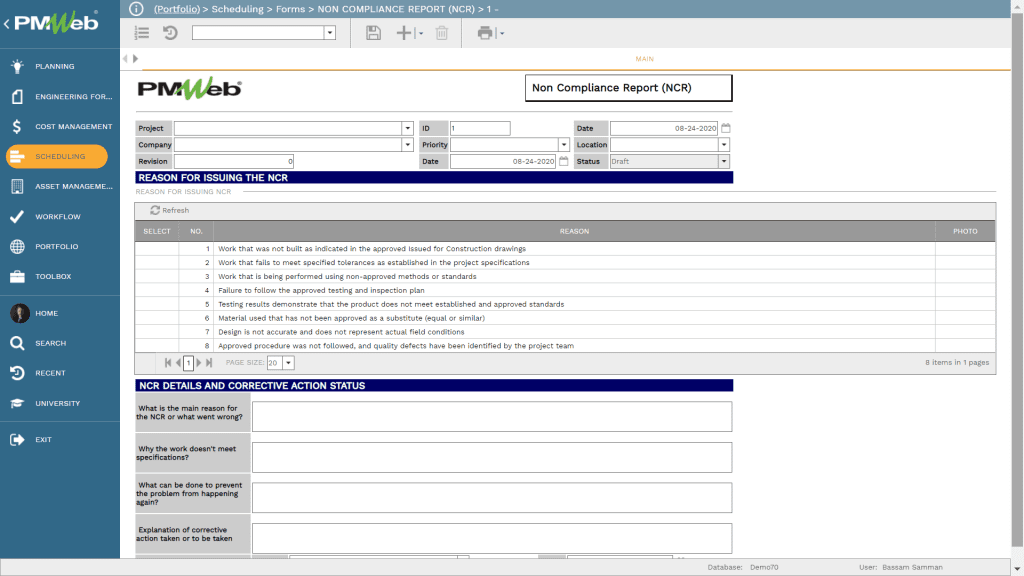
Although those input forms, whether available by default or created using form builder, could be common to many organizations and projects that they have, nevertheless the output form for those processes could differ. PMWeb reporting tool, part of a comprehensive construction project management software suite, allows the organization to create their own output forms with the color branding, form, and format needed by the organization. Those forms can be designed to include hyperlinks to attached documents as well as configured to be digitally signed using DocuSign. These forms streamline communications and improve efficiency, something a project owner will have no objections for.
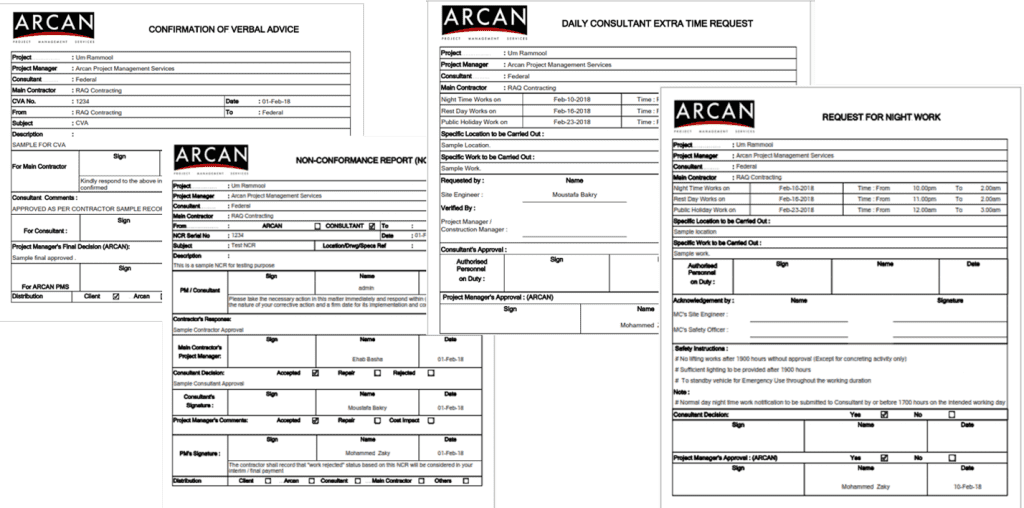
In addition to the output forms, output tabular and visual reports can be also created using PMWeb reporting tool. PMWeb reporting tool allows the organization to create their own output reports with the color branding, form and format needed by the organization. Those reports can be designed to enable drilling down to each transaction displayed in the report. Of course, those transactions can be grouped, sorted, filtered as well as summarized in those output reports.
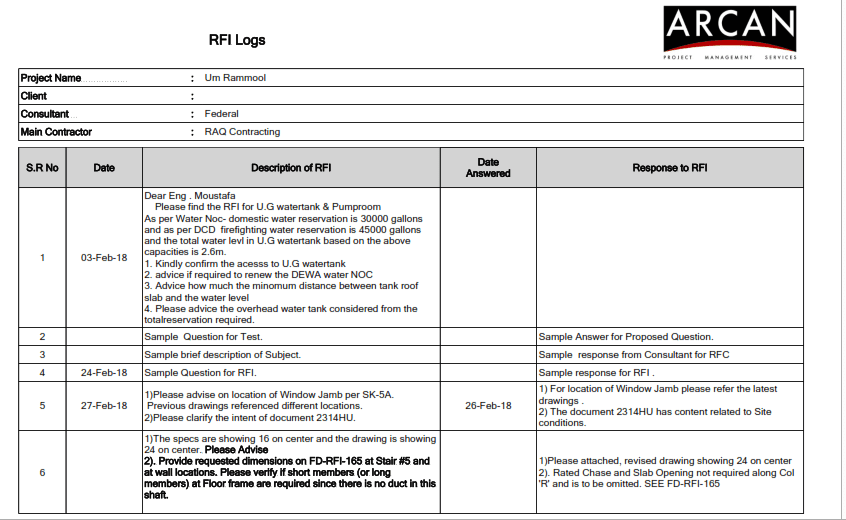
The growing use of business intelligence and data visualization tools like MS Power BI also allows the organization to access the data captured in PMWeb and consume this data to create interactive reports and dashboards. Those reports can be associated with third-party data applications like ESRI shapefiles and maps as well as Revit BIM Models to create executive dashboards when needed.
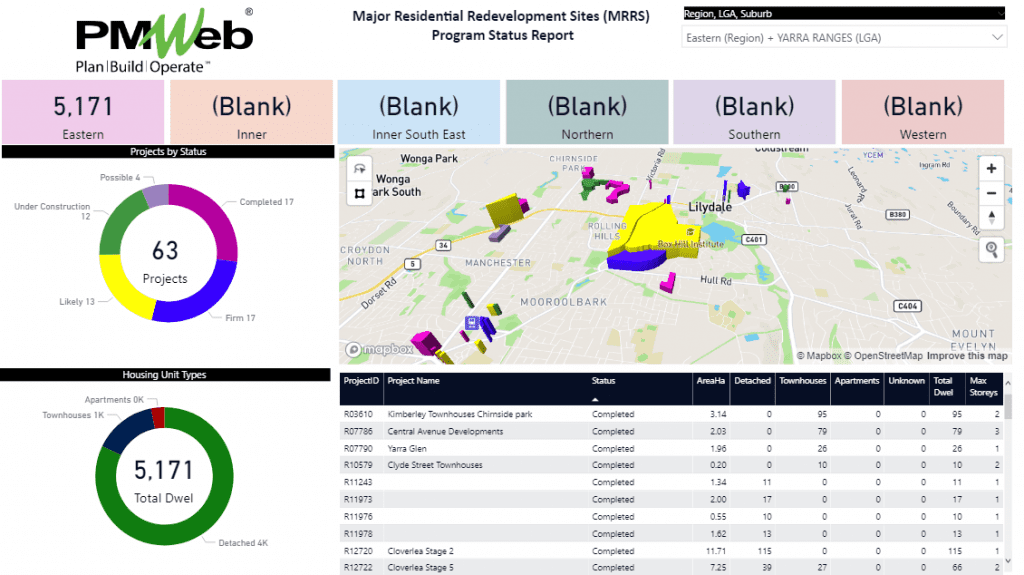
Those default and custom-built input forms and output forms and output reports and dashboards enforce the best practices of transparency, real-time single version of the truth reporting, maintaining data audit trail and having insight for projects data for faster and informed decisions. In addition, they eliminate the bad practices of data silos, weak access rights for captured data among others.
Everyone Should Be Held Accountable for Taken and To Be Taken Actions
The practice of communicating project information using the concept of a “Sender” to a group of “Recipients” who needs to figure out between themselves what to be done and in what sequence is one of the key reasons for lack of accountability. Even with the absence of digital transformation, each project management process has a pre-defined sequence of steps to be done by the different project entities. This is usually summarized in the Responsibility Assignment Matrix (RAM) and detailed in the workflow diagram for each process. Conditions that are associated with the approval authority levels either as established by the organization or as stated in the contract agreements need also to be considered.
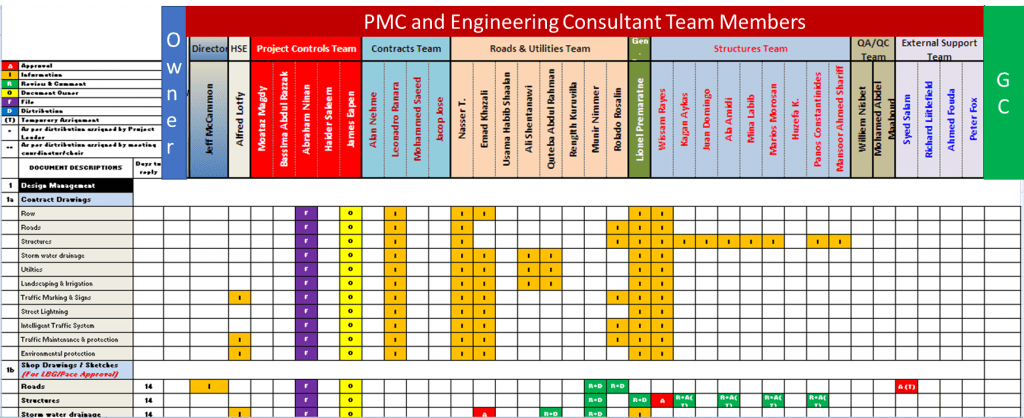
PMWeb allows creating a visual workflow for each project management process. Those workflows can be applicable across the completed projects portfolio that the organization or can be specific to a project or group of projects. The workflow allows defining the review and approval steps in the desired sequence and planned duration for each task. Available review and approval actions for each step can be also defined. In addition, conditions for approval authority levels can be added and alerts for delayed actions can be also set. Further, PMWeb allows delegating the workflow tasks for an individual for other team members. This delegation can be a specific time period or permanent
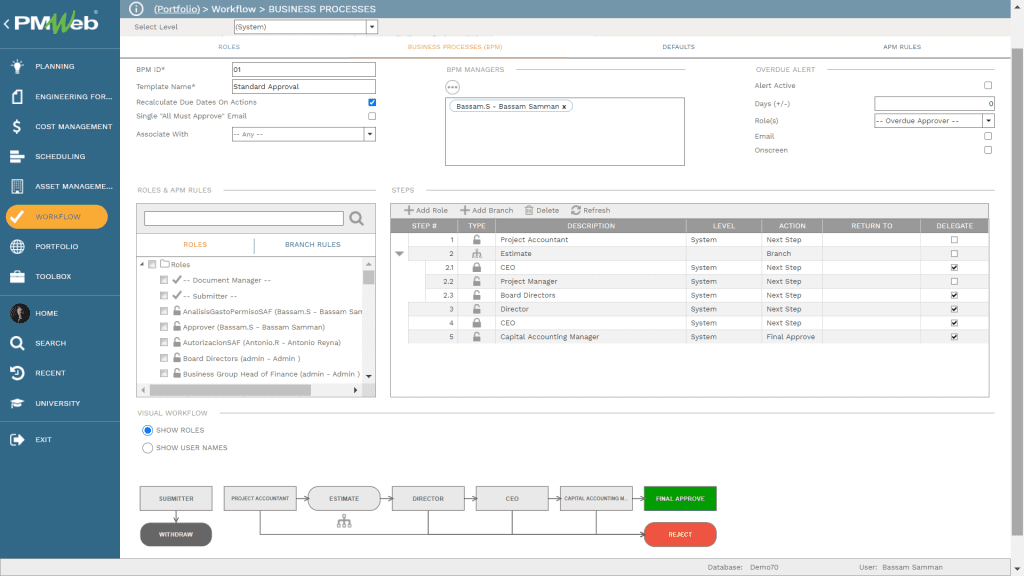
One of the ready to use PMWeb reports is the workflow status report. This report details the status of all current workflow steps for each project management process. The report can be modified to include Red, Cyan and Green color indicators to alert the reader for delayed workflow steps, due workflow steps and not-due workflow steps. A report that is a must requirement to enforce the best practice of accountability.
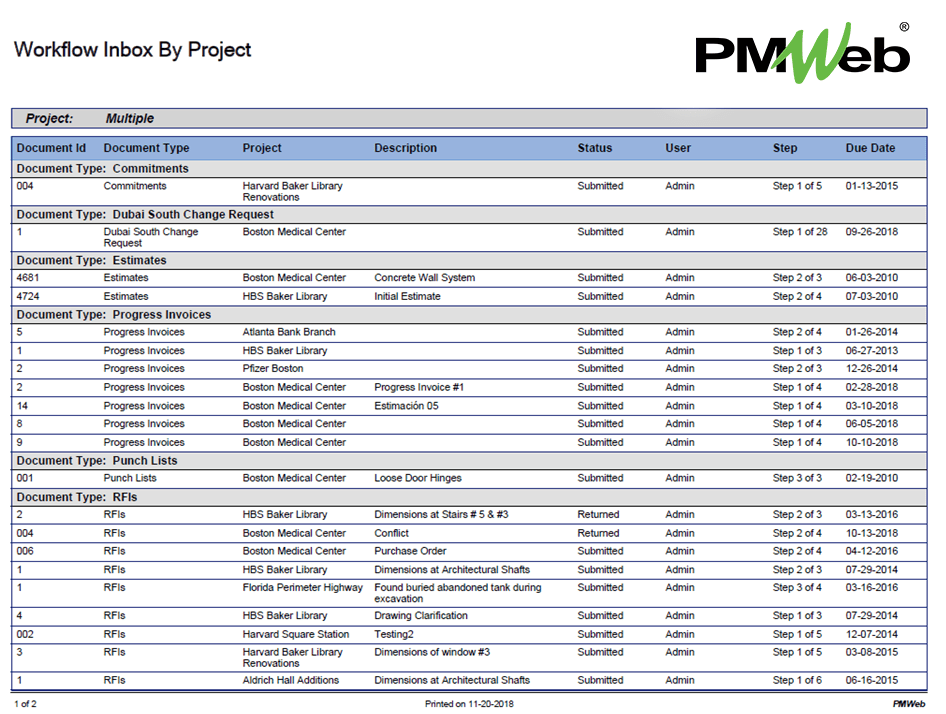
In addition to the formal workflow, there are few project management processes that are not managed through a formal workflow but rather in an ad-hoc workflow. In other words, different project team members could be invited to participate to provide the needed input. This workflow, although labelled as ad-hoc, nevertheless it needs to be documented. PMWeb, a leading construction project management software, allows assigning ad-hoc workflow for project management processes that are assigned a formal workflow.
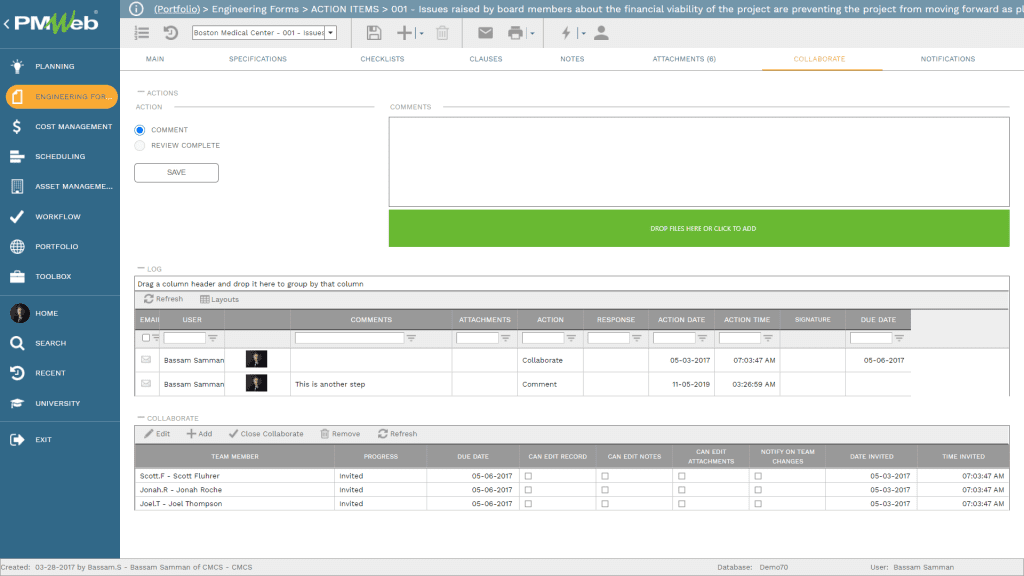
Eliminate the Risk of a Data Leak
Many project owners, and in particular those in the public sector, have strict requirements on their data security and protection. Those organization cannot permit having their projects data stored on MS Excel data silos with weak control. Those organizations want their projects data stored within their own secured data centers. Those organizations want to avoid the risk of data leak as well as enforce their own data access requirements whether it was through the web or through a secured VPN. Therefore, it is no wonder that more than 75% of PMWeb clients in the Middle East and North Africa region have elected to self-host PMWeb on their own data centers where they have the ultimate control on who should get access for this data. In addition, PMWeb comes ready with its own audit trail to capture the details of all access attempts to PMWeb.


